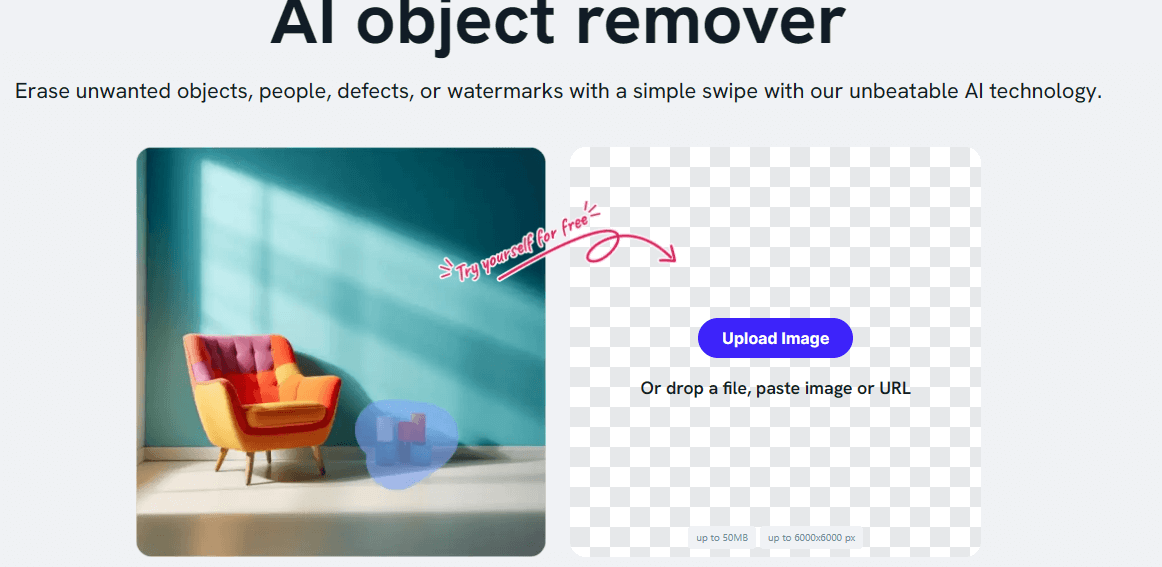Visuals can make documents and web content shine. From still photos to videos, visual content breaks up text and keeps life interesting. But what happens when you want to use images that aren't quite ready for display?
Knowing how to remove a watermark can come in handy in certain situations. Here's a quick breakdown of what it involves, whether it's OK to do, and how to get the job done.
Can You Remove Watermarks Legally?
Removing watermarks can be a pretty tricky issue. There are certain cases where it's fine, but being careless might get you into serious legal trouble.
Here's the definitive answer: Removing a watermark is generally inappropriate in most situations. By doing so, you infringe on the image creator's rights.
This can lead to lots of trouble down the line. Depending on where you live, you might get sued, and if you get caught, your reputation could take a major hit.
There are exceptions to every rule, however. In some scenarios, it may be acceptable to remove a watermark, provided you do things the legit way.
When it's not okay to remove a watermark:
- When you're working with copyrighted material. Removing watermarks from copyrighted images, videos, or documents without permission isn't just illegal. It's also highly unethical because you're stealing other people's work.
- When you're trying to get around commercial use restrictions. Many types of content are protected from commercial use. This means they're fine to share, but only if you're not trying to make money. Using watermarked content for commercial purposes, like selling or promoting products, is unacceptable.
- When you want to repost on social media. Social media is full of copying and theft, but that doesn't make it OK to join in. Removing watermarks from social media posts and sharing content as your own can violate copyright laws. Even though you're unlikely to get into legal trouble due to how much content gets reposted online, you might be violating the platform terms. If this happens, you could receive a strike or lose your right to make money from any content you post in the future!
- When you want to make unauthorized alterations. Remixing and editing are facts of life in the creative world. But there are limits to what counts as fair use. If you alter watermarked content in a way that misrepresents the original creator's intent, it's not okay.
- When you want to claim the work as your own. Never remove a watermark so that you can pretend you created work made by others. This should really go without saying, but unfortunately, people do it all the time.
When it may be okay to remove a watermark:
- When you've got explicit permission. Sometimes copyright owners won't mind you removing a watermark as long as you ask first. This can happen when you want to reuse an old image that the original creator no longer has an unwatermarked version of. In this case, be sure you get clear written consent to cover your legal bases and avoid future problems.
- When it's for personal or internal use only. Copyright law doesn't really apply to personal use when money doesn't exchange hands. In other words, if you're creating a presentation for your coworkers or reusing anold headshot you already paid for, you can feel free to remove the watermark. You shouldn't ignore the owner's rights, though — and many creators respond favorably to a polite email asking for permission, so why not make the effort?
- When the rights have expired. Copyright protection only lasts for so many years before it expires. If nobody renews the copyright, the content will enter what's called the public domain — a state where anyone can use it freely, including for commercial purposes. Watermark removal may be acceptable in these cases, but it's still wise to be sure, especially with archival, news, and other historical images.
In general, respect copyrights, and if you're unsure, just ask the creator. Seeking permission is the best practice to follow when you're in doubt, and there are plenty of non-watermarked images out there too.
Easy Options for Removing Watermarks
So you've found some watermarked images that you can legally clean up. The only question is how to get started.
There are many ways to handle this task, but beware! Some of the options we're about to discuss take way more work than others.
How to Remove Watermarks in Photoshop
Open your image by navigating to the File > Open menu option or dragging and dropping it into Photoshop.
Next, you want to select the watermark area. Choose whichever selection tool you're most comfortable with, but consider the style of watermark you're dealing with. For instance, if the watermark is a clean shape, using the Rectangular Marquee or shape selection tool will probably be quickest.

After picking your tool of choice, drag out a selection over the watermark. From here, you have a few options:
1 . Use the "Fill" tool to seamlessly blend with the surrounding colors. This can take a couple of tries depending on how clean your selection is. You'll also have to choose the appropriate matching color — it may help to start at a low opacity and work on small areas individually. Alternatively, you can pick the content-aware fill option and enable Color Adaptation to get a nice automatic fill.

2 . Use the "Patch" tool to replace the selected area with pixels from another part of the image. This method typically produces excellent results, but once again, your selection matters. You'll also have to be careful of which pixels you use to copy — it's best to look for nearby areas with the same colors.

3 . Use the "Content Aware Fill" tool's interactive dialog to let AI handle the work. This tool tries to guess what the image would look like if the target object — in this case, the watermark — weren't there. You can play with settings like where the new pixels get sampled from, the selection you'll replace, and whether to output the result to a separate layer.

Photoshop offers a lot of different options for removing watermarks. But there are some drawbacks to this method, such as it not being free and only working with still images. With options like the Fill and Patch tools, you may still end up with slight traces of the watermark depending on how careful you are.
How to Remove Watermarks From PDFs
PDFs sometimes contain watermarks as well. The nice thing is that these documents typically store all of their images, text, and other elements in layers. Unless the PDF is composed of flattened images, you can open it up and eliminate the bits you don't want.
Pro Tip: Deleting watermarks won’t work if they’re embedded in the images contained in the PDF. In that case, you’ll have to save the image as a separate file, use one of the other methods from this article, and re-embed the fixed image in the PDF.
This is typically as simple as opening the PDF in your editor, navigating to the target page, and searching for the watermark elements. Sometimes you can achieve this by clicking directly on the watermark, but don't always count on it! If the watermarks aren't grouped together, you'll need to make multiple selections or try more than one editing pass.

Alternatively, you can try navigating to your PDF editor's layer view. This might look different depending on which app you open your PDF with. Click around until you've selected all the watermark elements.
After making your selection(s), you just delete them. If you were successful, you'll have a watermark-free PDF. This general technique works in multiple apps, including Adobe Illustrator (monthly subscription), Inkscape (free), and LibreOffice Draw (free).
How to Remove Watermarks Completely Using ImageWith.ai Clearoff
So far, the methods we've covered haven't been perfect. In some cases, they can take a lot of work to get clean results. And even if you don’t mind training until you become proficient, you'll still have to pay for a premium subscription just to get your foot in the door.
Fortunately, you can still reap the rewards of using advanced artificial intelligence to remove watermarks. What's more, this method works on the web, so you don't need a powerful graphics card or computer —your phone is more than good enough.

Start by visitingImageWith.ai's Clearoff tool. Upload your image in the box by clicking the upload button or dragging a file into your browser window.

Now there are two main options:
- Tap mode. In this mode, you just click or tap on the item you want to remove. The tool will detect the item and replace it with an appropriate background.
- Draw mode. In this mode, you'll need to draw out a selection for the tool to target. This may be more appropriate with complex watermark shapes, but make sure you get the whole watermark. If necessary, you can adjust the brush size to make the process easier.

At any time, you can click “Revert” to go back to your starting image. Click and hold the eyeball button to quickly see the difference between your chosen settings and the original without losing your work. When you're done, hit “Download” to save your work.
The best thing about ImageWith.ai's Clearoff is that it’s totally free! Why pay a premium for the power of AI if you don't have to?
Conclusion
Watermarks can be annoying, but they exist for a good reason. After all, protecting your work is important — something you can agree with even if you're the person who needs to remove a watermark!
With that in mind, there are definitely good reasons to clean up watermarked images, and AI is a great way to go. Try it today by heading over to ImageWith.ai.
Frequently Asked Questions
What is a watermark?
A watermark is a subtle, often translucent mark or pattern embedded in a document, image, or video. These marks typically come in the form of logos, patterns, or text.
Why do people use watermarks on photos?
People watermark photos for several important reasons. Copyright owners do it to assert their ownership, preventing unauthorized use or reproduction of their work. In legal or official contexts, watermarks can help verify a document's source. Businesses also use them to strengthen their brand identities.
Is removing watermarks from photos legal?
Without proper authorization, removing watermarks from photos generally infringes upon copyright and ownership rights. It's important to respect the intellectual property of others. If you need to use an image, consider seeking permission or obtaining a proper license for it.






